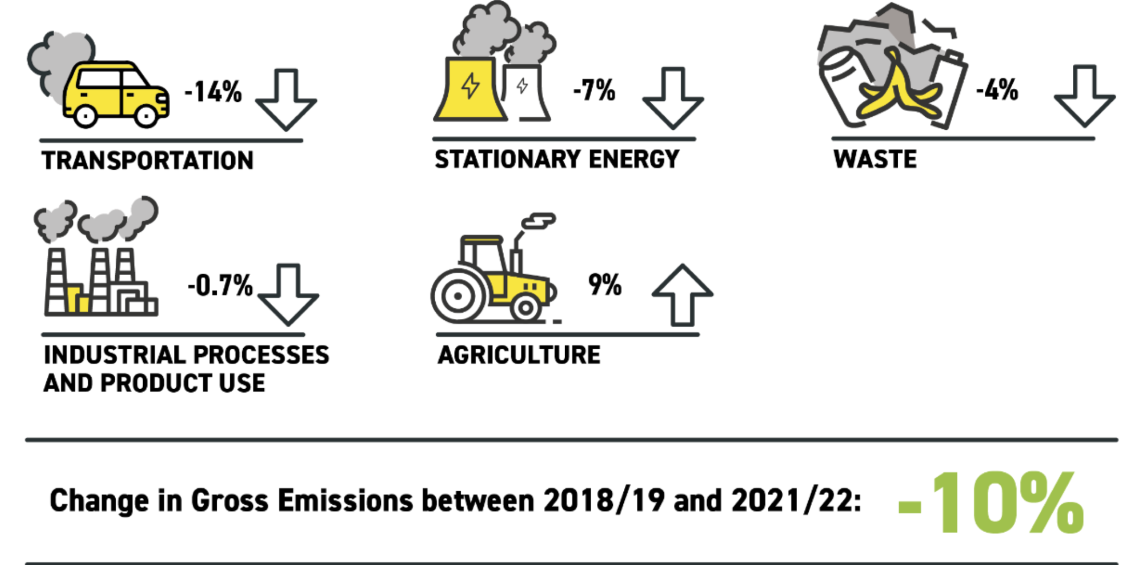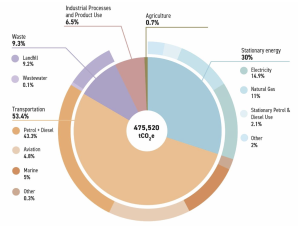
My thoughts below & graphs used, are all in a Lower Hutt context focusing on the report on Hutt City’s Emissions. This report, and the regional report are available below & through Greater Wellington Regional Council (GWRC).
Following the COVID-19 lockdowns, Lower Hutt, along with the entire Wellington region, has seen a notable decrease in greenhouse gas emissions. A report released on Monday by Greater Wellington Regional Council shows a 10% reduction in Lower Hutt’s total emissions from 2019 to 2022. This significant decrease is largely attributed to a drop in transport emissions, including air travel and petrol & diesel used for vehicles, which together account for 53% of our total emissions.
Other sectors such as stationary energy, contributing 30% to our total emissions, and waste, accounting for 9% of our emissions, also experienced reductions. However, the most substantial decrease was observed in the transport sector, which saw a 14% reduction over this period.
The COVID-19 pandemic has undeniably been a major driving force behind these changes, particularly transport. However, it is crucial to remember that this reduction in emissions is not just a temporary blip caused by global lockdowns. It is a testament to the fact that our actions can and do have a significant impact on our environment.
The challenge now is to maintain this momentum. If we are to meet our climate change goals of halving emissions by 2030 and reducing emissions to net zero by no later than 2050, we need to reduce our emissions by the same amount every single year. The changes we’ve seen in Lower Hutt prove that this is not an impossible task. We did it for COVID-19, we can do it for climate change.
So, what can we do to continue this positive trend? Here are a few suggestions:
Reduce Car Usage: As transport is a significant contributor to our emissions, consider walking, cycling, or using public transport more often. If you need to use a car, consider carpooling or switching to an electric vehicle.
Composting: Organic food waste generates methane, a greenhouse gas that’s 34 times more potent than carbon dioxide and lingers in the atmosphere for a longer period. By composting, worm farming, or altering your diet, you can lessen food waste in Silverstream landfill.
Energy Efficiency: Make your home more energy-efficient by insulating, using energy-efficient appliances, and switching to renewable energy sources if possible.
Reduce, Reuse, Recycle: Minimise waste by following the three R’s. This not only reduces emissions from waste but also from the production of new goods.
Support Local: Buy local products to reduce emissions from transportation. Plus, you’ll be supporting the local economy!
The journey towards a sustainable future is a long one, but with collective action, it is a goal well within our reach. Each one of us has a role to play in this grand narrative of transformation. By making conscious choices, we can collectively turn the tide, ensuring a healthier, greener future for generations to come. After all, we are not just inhabitants of this planet; we are its stewards. And it’s high time we rise to the occasion.
Please visit Greater Wellington Regional Council’s website to view their report for the greater Wellington region & the sub-report just focusing on Lower Hutt.
